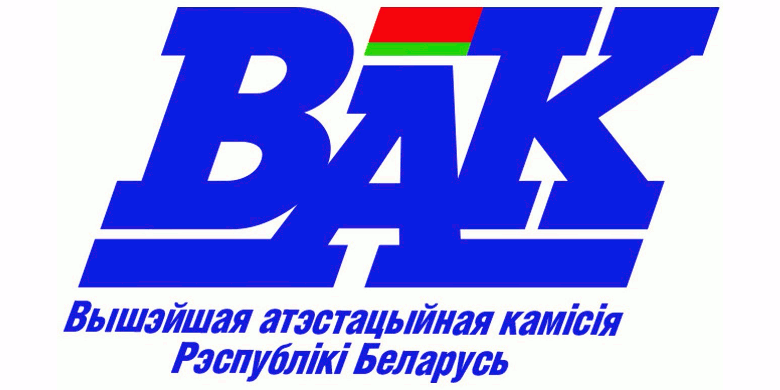Факторы риска распространения вируса Зика в Европе
Ключевые слова:
вирус Зика, лихорадка Зика, эпидемиологическая ситуация, факторы риска, ЕвропаАннотация
В обзоре представлена информация о текущей эпидемиологической ситуации в мире, связанной с инфекцией, вызываемой вирусом Зика (ВЗ), и анализируется информация о потенциальном риске заражения этой болезнью в Европе. До пика эпидемии вирусной инфекции Зика (ВИЗ) в Северной и Южной Америке в начале весны 2016 г. исторически было известно о спорадических вспышках ВИЗ в форме легких лихорадочных заболеваний в Африке и Юго-Восточной Азии. Расширение циркуляции ВЗ в новые районы Тихоокеанского региона, Северной и Южной Америки и Карибского бассейна в период 2013-2016 гг. стало серьезной проблемой для общественного здравоохранения, главным образом из-за врожденного синдрома Зика у новорожденных. В течение 2017-2018 гг. циркуляция вируса в этих регионах заметно сократилась, о чем свидетельствует уменьшение числа случаев, зарегистрированных в рамках национального эпиднадзора в затронутых странах и сокращение числа случаев, связанных с поездками.
Библиографические ссылки
2. Hayes, E. Zika virus outside Africa / E. Hayes // Emerg. Infect. Dis. – 2009. – Vol. 15, N 9. – P. 1347-1350.
3. European Centre for Disease Prevention and Control. Zika virus transmission worldwide. Risk assessment. 9 Apr. 2019 [Electronic resource] / Stockholm: ECDC, 2019. – Mode of access: http://ecdc.europa.eu/sites/portal/files/documents/zika-risk-assessment-9-april-2019.pdf. – Date of access: 27.06.2019.
4. Клинико-диагностические аспекты и профилактика лихорадки Зика в связи с чрезвычайной эпидемиологической ситуацией в области общественного здравоохранения / Т.И. Самойлова, В.А. Горбунов, В.П. Шиманович, А.Г. Красько, Л.М. Рустамова, С.А. Дракина, А.С. Петкевич, Т.А. Аблова // Санитарно-эпидемиологическая служба Республики Беларусь : история, актуальные проблемы на современном этапе и перспективы развития : сб. науч. тр. Междунар. науч.-практ. конф. «Здоровье и окружающая среда», посвящ. 90-летию санит.-эпидемиол. службы Республики Беларусь (Минск, 28 октября 2016 г.): в 2 т. / редкол. : Н. П. Жукова [и др.]. – Минск : БГМУ, 2016. – Т. 2. – С. 201-204.
5. Current Zika virus epidemiology and recent epidemics / S. Ioos [et al.] // Med. Mal. Infect. – 2014. – Vol. 44, N 7. – P. 302-3077. DOI: 10.1016/j.medmal.2014.04.008
6. Emerging & re-emerging infections in India: an overview / T. Dikid [et al.] // Indian J. Med. Res. – 2013. – Vol. 138. – P. 19-31.
7. Хасанова, Г. М. Аналитический обзор распространения заболевания, вызываемого вирусом Зика / Г. М. Хасанова, Э. Р. Исхаков, А. Н. Хасанова // Международный академический вестник (Уфа). – 2016. – № 4. – С. 29-31.
8. Самойлова, Т. И. Состояние проблемы по лихорадке Зика в мире после отмены чрезвычайной ситуации [Электронный ресурс] / Т. И. Самойлова // Веснік Палескага дзяржаўнага ўніверсітэта. Серыя прыродазнаўчых навук – 2018. – № 1. – С. 14-28. – Режим доступа : http://ojs.polessu.by/BPSUS2/article/view/987/890. – Дата доступа: 30.08.2019.
9. Самойлова, Т. И. Эколого-эпидемиологические особенности распространения вируса Зика в мире / Т. И. Самойлова // Вестник Гродненского гос. ун-та. Сер. 5. Экономика. Социология. Биология. – 2018. – Т. 8. –№ 1. – С. 132-143.
10. World Health Organization. Zika epidemiology update, July 2019 [Electronic resource]. – Mode of access: https://www.who.int/emergencies/diseases/zika/zika-epidemiology-update-july-2019.pdf?ua=1. – Date of access: 05.08.2019.
11. World Health Organization. Countries and territories with current or previous Zika virus transmission. Updated July 2019 [Electronic resource]. – Mode of access : https://www.who.int/emergencies/diseases/zika/countries-with-zika-and-vectors-table.pdf. – Date of access: 05.08.2019.
12. Sero-prevalence of yellow fever and related flaviviruses in Ethiopia: a public health perspective / M. Mengesha Tsegaye [et al.] // BMC Public Health. – 2018. – Vol. 18, N 1. – P. 1011. DOI: 10.1186/s12889-018-5726-9
13. WHO Region of the Americas/Pan American Health Organization. PLISA Health Information Platform for the Americas: Cases of Zika virus disease, by country or territory [Electronic resource]. – Mode of access: http://www.paho.org/data/index.php/en/mnu-topics/zika/524-zika-weekly-en.html. – Date of access: 05.08.2019.
14. Zika virus seropositivity in 1-4-year-old children, Indonesia, 2014 / R.T. Sasmono [et al.] // Emerg. Infect. Dis. – 2018. – Vol. 24, N 9. – P. 1740-1743. DOI: 10.3201/eid2409.180582
15. Low Zika virus seroprevalence in Vientiane, Laos, 2003-2015 / B. Pastorino [et al.] // Am. J. Trop. Med. Hyg. – 2019. – Vol. 100, N 3. – P. 639-642. DOI: 10.4269/ajtmh.18-0439
16. Molecular epidemiology and genetic diversity of Zika virus from field-caught mosquitoes in various regions of Thailand / A. Phumee [et al.] // Pathogens. – 2019. – Vol. 8, N 1. – pii: E30. DOI: 10.3390/pathogens8010030
17. World Health Organization. Zika virus infection: India, 2 November 2018 [Electronic resource]. – Mode of access: https://www.who.int/emergencies/diseases/zika/india-november-2018/en/. – Date of access: 05.08.2019.
18. World Health Organization Regional Office for Africa. Microcephaly – suspected congenital Zika syndrome, Angola. Weekly Bulletin on Outbreaks and Other Emergencies; Week 48: 25 November – 1 December 2017 [Electronic resource]. – Mode of access: https://apps.who.int/iris/bitstream/handle/10665/259557/OEW48-2504122017.pdf?sequence=1. – Date of access: 05.08.2019.
19. First case of confirmed congenital Zika syndrome in continental Africa / M. Sassetti [et al.] // Trans. R. Soc. Trop. Med. Hyg. – 2018. – Vol. 112. – N 10. – P. 458-462. DOI: 10.1093/trstmh/try074.
20. Case of microcephaly after congenital infection with Asian lineage Zika virus, Thailand / T. Wongsurawat [et al.] // Emerg. Infect. Dis. – 2018. – Vol. 24, N 9. – P. 1758-1761. DOI: 10.3201/eid2409.180416
21. Zika virus infection and microcephaly in Vietnam / M.L. Moi [et al.] // Lancet Infect. Dis. – 2017. – Vol. 17, N 8. – P. 805-806. DOI: 10.1016/S1473-3099(17)30412-7
22. World Health Organization. Countries and territories with current or previous Zika virus transmission [Electronic resource]. – Mode of access: https://www.who.int/ith/Zika_map.pdf?ua=1&ua=1. – Date of access: 05.08.2019.
23. Liu, Z.Y. The evolution of Zika virus from Asia to the Americas / Z.Y. Liu, W.F. Shi, C.F. Qin // Nat. Rev. Microbiol. – 2019. – Vol. 17, N 3. – P. 131-139. DOI: 10. WF 1038/s41579-018-0134-9.
24. The Asian lineage of Zika virus: transmission and evolution in Asia and the Americas / T. Hu [et al.] // Virol. Sin. – 2019. – Vol. 34. – N 1. – P. 1-8. DOI: 10.1007/s12250-018-0078-2
25. Zika virus outbreak in Rajasthan, India in 2018 was caused by a virus endemic to Asia / P.D. Yadav [et al. // Infect. Genet. Evol. – 2019. – Vol. 69. – P. 199-202. DOI: 10.1016/j.meegid.2019.01.026
26. African and Asian strains of Zika virus differ in their ability to infect and lyse primitive human placental trophoblast / M.A. Sheridan [et al.] // PLoS One. – 2018. – Vol. 13. – N 7. – e0200086. DOI: 10.1371/journal.pone.0200086
27. The African strain of Zika virus causes more severe in utero infection than Asian strain in a porcine fetal transmission model / D. Udenze [et al.] // Emerg. Microbes Infect. – 2019. – Vol. 8, N 1. – P. 1098-1107. DOI: 10.1080/22221751.2019.1644967
28. Performance of the Trioplex real-time RT-PCR assay for detection of Zika, dengue, and chikungunya viruses / G.A. Santiago [et al.] // Nat. Commun. – 2018. – Vol. 9, N 1. –P. 1391. DOI: 10.1038/s41467-018-03772-1
29. Specificity, cross-reactivity, and function of antibodies elicited by Zika virus infection / K. Stettler [et al.] // Science. – 2016. – Vol. 353. – N 6301. – P. 823-826. DOI: 10.1126/science.aaf8505
30. First case of laboratory-confirmed Zika virus infection imported into Europe, November 2013 [Electronic resource] / D. Tappe [et al.] // Euro Surveill. – 2014. – Vol. 19, N 4. – pii=20685. – Режим доступа : https://doi.org/10.2807/1560-7917.ES2014.19.4.20685. – Дата доступа : 27.08.2019.
31. European Centre for Disease Prevention and Control. Travel-associated Zika virus disease cases in the EU/EEA [Electronic resource]. – Mode of access: https://ecdc.europa.eu/en/all-topics-zzika-virus-infectionsurveillance-and-disease-data/travel-associated-zika-virus-disease. – Date of access: 27.08.2019.
32. Zika virus infection in pregnant women in Barcelona, Spain / C. Bocanegra [et al.] // Clin. Microbiol. Infect. – 2016. – Vol. 22, N 7. – P. 648-650. DOI: 10.1016/j.cmi.2016.03.025
33. Zika virus associated with microcephaly / J. Mlakar [et al.] // N. Engl. J. Med. – 2016. – Vol. 374, N 10. – P. 951-958. DOI: 10.1056/NEJMoa1600651
34. Zika virus infection with prolonged maternal viremia and fetal brain abnormalities / R.W. Driggers [et al.] // N. Engl. J. Med. – 2016. – Vol. 374, N 22. – P. 2142-2151. DOI: 10.1056/NEJMoa1601824
35. Paz, S. El Niño and climate change – contributing factors in the dispersal of Zika virus in the Americas? / S. Paz, J.C. Semenza // Lancet. – 2016. – Vol. 387, N 10020. – P. 745. DOI: 10.1016/S0140-6736(16)00256-7
36. Diaz-Menendez, M. Zika virus infection. Risk of spreading in Europe / M. Diaz-Menendez, C. Crespillo-Andujar. – Cham, Switzerland: Springer, 2017. – 93 p. DOI: 10.1007/978-3-319-59406-4
37. European Centre for Disease Prevention and Control and European Food Safety Authority. Mosquito maps [Electronic resource]. – Stockholm: ECDC, 2019. – Mode of access : https://ecdc.europa.eu/en/disease-vectors/surveillance-and-disease-data/mosquito-maps. – Date of access : 27.08.2019.
38. О двухуровневой структуре потенциальной эпидемической опасности массовых мероприятий с международным участием [Электронный ресурс] / Г.Г. Онищенко [и др.] // Проблемы особо опасных инфекций. – 2015. – № 1. – С. 5-9. – Режим доступа : https://doi.org/10.21055/0370-1069-2015-1-5-9. – Дата доступа : 27.08.2019.
39. Казачинская, Е.И. Стратегии исследования патогенности вируса Зика [Электронный ресурс] / Е.И. Казачинская, Н.В. Волкова, А.В. Иванова // Проблемы особо опасных инфекций. – 2018. – № 4. – С. 6-14. – Режим доступа: https://doi.org/10.21055/0370-1069-2018-4-6-14. – Дата доступа: 27.08.2019.
40. Alphavirus genome delivery occurs directly at the plasma membrane in a time- and temperature-dependent process / R. Vancini [et al.] // J. Virol. – 2013. – Vol. 87, N 8. – P 4352-4359. DOI: 10.1128/JVI.03412-12
41. World population stabilization unlikely this century / P. Gerland // Science. – 2014. – Vol. 346, N 6206. – P. 234-237. DOI: 10.1126/science.1257469
42. Lawrence, D. Effects of tropical deforestation on climate and agriculture / D. Lawrence, K. Vandecar // Nature Climate Change. – 2015. – Vol. 5. – P. 27-36.
References
1. Dick G.W.A., Kitchen S.F., Haddow A.J. Zika virus. Isolations and serological specificity. Trans. R. Soc. Trop. Med. Hyg., 1952, vol. 46, no. 5, pp. 509-520.
2. Hayes E. Zika virus outside Africa. Emerg. Infect. Dis., 2009, vol. 15, no. 9, pp. 1347-1350.
3. European Centre for Disease Prevention and Control. Zika virus transmission worldwide. Risk assessment. 9 Apr. 2019, Stockholm, ECDC, 2019. Available at: http://ecdc.europa.eu/sites/portal/files/documents/zika-risk-assessment-9-april-2019.pdf (accessed 27.06.2019).
4. Samojlova T.I., Gorbunov V.A., Shimanovich V.P., Kras'ko A.G., Rustamova L.M., Drakina S.A., Petkevich A.S., Ablova T.A. Kliniko-diagnosticheskie aspekty i profilaktika lihoradki Zika v svjazi s chrezvychajnoj jepidemiologicheskoj situaciej v oblasti obshhestvennogo zdravoohranenija [Clinical and diagnostic aspects and prevention of Zika fever in connection with Public Health Emergency of International Concern]. Sanitarno-jepidemiologicheskaja sluzhba Respubliki Belarus' : istorija, aktual'nye problemy na sovremennom jetape i perspektivy razvitija : sbornik nauchnyh trudov Mezhdunarodnoj nauchno-prakticheskoj konferencii «Zdorov'e i okruzhajushhaja sreda», posvjashhennoj 90-letiju sanitarno-jepidemiologicheskoj sluzhby Respubliki Belarus. In 2 vol. Ed. Zhukova N.P., et al. Minsk, BSMU, 2016, vol. 2, pp. 201-204. (In Russian)
5. Ioos S., Mallet H.P., Leparc Goffart I., Gauthier V., Cardoso T., Herida M. Current Zika virus epidemiology and recent epidemics. Med. Mal. Infect., 2014, vol. 44, no. 7, pp. 302-3077. DOI: 10.1016/j.medmal.2014.04.008
6. Dikid T., Jain S.K., Sharma A., Kumar A., Narain J.P. Emerging & re-emerging infections in India: an overview. Indian J. Med. Res., 2013, vol. 138, pp. 19-31.
7. Khasanova G.M., Iskhakov J.R., Khasanova A.N. Analiticheskij obzor rasprostranenija zabolevanija, vyzyvaemogo virusom Zika [Dissemination of virus Zika disease (analitic review)]. Mezhdunarodnyj akademicheskij vestnik (Ufa), 2016, no. 4, pp. 29-31. (In Russian)
8. Samoilova T.I. Sostojanie problemy po lihoradke Zika v mire posle otmeny chrezvychajnoj situacii [Epidemiological situation for Zika virus infection in the world after «Public Health Emergency» cancel]. Vesnіk Paleskaga dzjarzhaўnaga ўnіversіtjeta. Seryja pryrodaznaўchyh navuk [Bulletin of Polessky State University. Series in Natural Sciences], 2018, no. 1, pp. 14-28. (In Russian). Available at: http://ojs.polessu.by/BPSUS2/article/view/987/890 (accessed 30.08.2019).
9. Samoilova T.I. Jekologo-jepidemiologicheskie osobennosti rasprostranenija virusa Zika v mire [Ecological and epidemiological features of the spread of Zika virus in the world]. Vesnik Hrodzenskaha Dziarzhaunaha Universiteta Imia Ianki Kupaly. Seryia 5. Ekanomika. Satsyialohiia. Biialohiia [Vesnik of Yanka Kupala State University of Grodno. Series 5. Economics. Sociology. Biology], 2018, vol. 8, no. 1, pp. 132-143. (In Russian)
10. World Health Organization. Zika epidemiology update, July 2019. Available at: https://www.who.int/emergencies/diseases/zika/zika-epidemiology-update-july-2019.pdf?ua=1 (accessed 05.08.2019).
11. World Health Organization. Countries and territories with current or previous Zika virus transmission. Updated July 2019. Available at: https://www.who.int/emergencies/diseases/zika/countries-with-zika-and-vectors-table.pdf (accessed 05.08.2019).
12. Mengesha Tsegaye M., Beyene B., Ayele W., Abebe A., Tareke I., Sall A., Yactayo S., Shibeshi M.E., Staples E., Belay D., Lilay A., Alemu A., Alemu E., Kume A., Mariam A., Ronveaux O., Tefera M., Kassa W., Bekele Weyessa A., Jima D., Kebede A., Tayachew A. Sero-prevalence of yellow fever and related flaviviruses in Ethiopia: a public health perspective. BMC Public Health, 2018, vol. 18, no. 1, pp. 1011. DOI: 10.1186/s12889-018-5726-9
13. WHO Region of the Americas/Pan American Health Organization. PLISA Health Information Platform for the Americas: Cases of Zika virus disease, by country or territory. Available at: http://www.paho.org/data/index.php/en/mnu-topics/zika/524-zika-weekly-en.html (accessed 05.08.2019).
14. Sasmono R.T., Dhenni R., Yohan B., Pronyk P., Hadinegoro S.R., Soepardi E.J., Ma'roef C.N., Satari H.I., Menzies H., Hawley W.A., Powers A.M., Rosenberg R., Myint K.S.A., Soebandrio A. Zika virus seropositivity in 1-4-year-old children, Indonesia, 2014. Emerg. Infect. Dis., 2018, vol. 24, no. 9, pp. 1740-1743. DOI: 10.3201/eid2409.180582
15. Pastorino B., Sengvilaipaseuth O., Chanthongthip A., Vongsouvath M., Souksakhone C., Mayxay M., Thirion L., Newton P.N., de Lamballerie X., Dubot-Pérès A. Low Zika virus seroprevalence in Vientiane, Laos, 2003-2015. Am. J. Trop. Med. Hyg., 2019, vol. 100, no. 3, pp. 639-642. DOI: 10.4269/ajtmh.18-0439
16. Phumee A., Buathong R., Boonserm R., Intayot P., Aungsananta N., Jittmittraphap A., Joyjinda Y., Wacharapluesadee S., Siriyasatien P. Molecular epidemiology and genetic diversity of Zika virus from field-caught mosquitoes in various regions of Thailand. Pathogens, 2019, vol. 8, no. 1, pii: E30. DOI: 10.3390/pathogens8010030
17. World Health Organization. Zika virus infection: India, 2 November 2018. Available at: https://www.who.int/emergencies/diseases/zika/india-november-2018/en/ (accessed 05.08.2019).
18. World Health Organization Regional Office for Africa. Microcephaly – suspected congenital Zika syndrome, Angola. Weekly Bulletin on Outbreaks and Other Emergencies; Week 48: 25 November – 1 December 2017. Available at: https://apps.who.int/iris/bitstream/handle/10665/259557/OEW48-2504122017.pdf?sequence=1 (accessed 05.08.2019).
19. Sassetti M., Zé-Zé L., Franco J., Cunha J.D., Gomes A., Tomé A., Alves M.J. First case of confirmed congenital Zika syndrome in continental Africa. Trans. R. Soc. Trop. Med. Hyg., 2018, vol. 112, no. 10, pp. 458-462. DOI: 10.1093/trstmh/try074
20. Wongsurawat T., Athipanyasilp N., Jenjaroenpun P., Jun S.R., Kaewnapan B., Wassenaar T.M., Leelahakorn N., Angkasekwinai N., Kantakamalakul W., Ussery D.W., Sutthent R., Nookaew I., Horthongkham N. Case of microcephaly after congenital infection with Asian lineage Zika virus, Thailand. Emerg. Infect. Dis., 2018, vol. 24, no. 9, pp. 1758-1761. DOI: 10.3201/eid2409.180416
21. Moi M.L., Nguyen T.T.T., Nguyen C.T., Vu T.B.H., Tun M.M.N., Pham T.D., Pham N.T., Tran T., Morita K., Le T.Q.M., Dang D.A., Hasebe F. Zika virus infection and microcephaly in Vietnam. Lancet Infect. Dis., 2017, vol. 17, no. 8, pp. 805-806. DOI: 10.1016/S1473-3099(17)30412-7
22. World Health Organization. Countries and territories with current or previous Zika virus transmission. Available at: https://www.who.int/ith/Zika_map.pdf?ua=1&ua=1 (accessed 05.08.2019).
23. Liu Z.Y., Shi W.F., Qin C.F. The evolution of Zika virus from Asia to the Americas. Nat. Rev. Microbiol., 2019, vol. 17, no. 3, pp. 131-139. DOI: 10. WF 1038/s41579-018-0134-9
24. Hu T., Li J., Carr M.J., Duchêne S., Shi W. The Asian lineage of Zika virus: transmission and evolution in Asia and the Americas. Virol. Sin., 2019, vol. 34, no. 1, pp. 1-8. DOI: 10.1007/s12250-018-0078-2
25. Yadav P.D., Malhotra B., Sapkal G., Nyayanit D.A., Deshpande G., Gupta N., Padinjaremattathil U.T., Sharma H., Sahay R.R., Sharma P., Mourya D.T. Zika virus outbreak in Rajasthan, India in 2018 was caused by a virus endemic to Asia. Infect. Genet. Evol., 2019, vol. 69, pp. 199-202. DOI: 10.1016/j.meegid.2019.01.026
26. Sheridan M.A., Balaraman V., Schust D.J., Ezashi T., Roberts R.M., Franz A.W.E. African and Asian strains of Zika virus differ in their ability to infect and lyse primitive human placental trophoblast. PLoS One, 2018, vol. 13, no. 7, e0200086. DOI: 10.1371/journal.pone.0200086
27. Udenze D., Trus I., Berube N., Gerdts V., Karniychuk U. The African strain of Zika virus causes more severe in utero infection than Asian strain in a porcine fetal transmission model. Emerg Microbes Infect., 2019, vol. 8, no. 1, pp. 1098-1107. DOI: 10.1080/22221751.2019.1644967
28. Santiago G.A., Vázquez J., Courtney S., Matías K.Y., Andersen L.E., Colón C., Butler A.E., Roulo R., Bowzard J., Villanueva J.M., Muñoz-Jordan J.L. Performance of the Trioplex real-time RT-PCR assay for detection of Zika, dengue, and chikungunya viruses. Nat. Commun., 2018, vol. 9, no. 1, pp. 1391. DOI: 10.1038/s41467-018-03772-1
29. Stettler K., Beltramello M., Espinosa D.A., Graham V., Cassotta A., Bianchi S., Vanzetta F., Minola A., Jaconi S., Mele F., Foglierini M., Pedotti M., Simonelli L., Dowall S., Atkinson B., Percivalle E., Simmons C.P., Varani L., Blum J., Baldanti F., Cameroni E., Hewson R., Harris E., Lanzavecchia A., Sallusto F., Corti D. Specificity, cross-reactivity, and function of antibodies elicited by Zika virus infection. Science, 2016, vol. 353, No. 6301, pp. 823-826. DOI: 10.1126/science.aaf8505
30. Tappe D., Rissland J., Gabriel M., Emmerich P., Günther S., Held G., Smola S., Schmidt-Chanasit J. First case of laboratory-confirmed Zika virus infection imported into Europe, November 2013. Euro Surveill., 2014, vol. 19, no. 4, pii=20685. Available at: https://doi.org/10.2807/1560-7917.ES2014.19.4.20685 (accessed 27/08/2019).
31. European Centre for Disease Prevention and Control. Travel-associated Zika virus disease cases in the EU/EEA Available at: https://ecdc.europa.eu/en/all-topics-zzika-virus-infectionsurveillance-and-disease-data/travel-associated-zika-virus-disease (accessed 27.08.2019).
32. Bocanegra C., Sulleiro E., Soriano-Arandes A., Pou D., Suy A., Llurba E., Rodó C., Espasa M., Campins M., Martín A., Rodrigo C., Vázquez A., De Ory F., Sánchez-Seco M.P., Pumarola T., Carreras E., Molina I. Zika virus infection in pregnant women in Barcelona, Spain. Clin Microbiol Infect., 2016, vol. 22, no. 7, pp. 648-650. DOI: 10.1016/j.cmi.2016.03.025
33. Mlakar J., Korva M., Tul N., Popović M., Poljšak-Prijatelj M., Mraz J., Kolenc M., Resman Rus K., Vesnaver Vipotnik T., Fabjan Vodušek V., Vizjak A., Pižem J., Petrovec M., Avšič Županc T. Zika virus associated with microcephaly. N. Engl. J. Med., 2016, vol. 374, no. 10, pp. 951-958. DOI: 10.1056/NEJMoa1600651
34. Driggers R.W., Ho C.Y., Korhonen E.M., Kuivanen S., Jääskeläinen A.J., Smura T., Rosenberg A., Hill D.A., DeBiasi R.L., Vezina G., Timofeev J., Rodriguez F.J., Levanov L., Razak J., Iyengar P., Hennenfent A., Kennedy R., Lanciotti R., du Plessis A., Vapalahti O. Zika virus infection with prolonged maternal viremia and fetal brain abnormalities. N. Engl. J. Med., 2016, vol. 374, no. 22, pp. 2142-2151. DOI: 10.1056/NEJMoa1601824
35. Paz S., Semenza J.C. El Niño and climate change – contributing factors in the dispersal of Zika virus in the Americas? Lancet, 2016, vol. 387, no. 10020, pp. 745. DOI: 10.1016/S0140-6736(16)00256-7
36. Diaz-Menendez M., Crespillo-Andujar C. Zika virus infection. Risk of spreading in Europe. Cham, Switzerland, Springer, 2017, 93 p. DOI: 10.1007/978-3-319-59406-4
37. European Centre for Disease Prevention and Control and European Food Safety Authority. Mosquito maps. Stockholm, ECDC, 2019. Available at: https://ecdc.europa.eu/en/disease-vectors/surveillance-and-disease-data/mosquito-maps (accessed 27.08.2019).
38. Onishchenko G.G., Patyashina M.A, Udovichenko S.K., Toporkov A.V., Toporkov V.P., Kutyrev V.V. O dvuhurovnevoj strukture potencial'noj jepidemicheskoj opasnosti massovyh meroprijatij s mezhdunarodnym uchastiem [Concerning two-level structure of potential epidemic hazard of the mass events with international participation]. Problems of Particularly Dangerous Infections, 2015, no. 1, pp. 5-9. (In Russian). Available at: https://doi.org/10.21055/0370-1069-2015-1-5-9 (accessed 27.08.2019).
39. Kazachinskaya E.I., Volkova N.V., Ivanova A.V. Strategii issledovanija patogennosti virusa Zika [Strategies for investigation of Zika virus pathogenicity]. Problems of Particularly Dangerous Infections, 2018, no. 4, pp. 6-14. (In Russian). Available at: https://doi.org/10.21055/0370-1069-2018-4-6-14 (accessed 27.08.2019).
40. Vancini R., Wang G., Ferreira D., Hernandez R., Brown D.T. Alphavirus genome delivery occurs directly at the plasma membrane in a time- and temperature-dependent process. J. Virol., 2013, vol. 87, no. 8, pp. 4352-4359. DOI: 10.1128/JVI.03412-12
41. Gerland P., Raftery A.E., Sevčíková H., Li N., Gu D., Spoorenberg T., Alkema L., Fosdick B.K., Chunn J., Lalic N., Bay G., Buettner T., Heilig G.K., Wilmoth J. World population stabilization unlikely this century. Science, 2014, vol. 346, no. 6206, pp. 234-237. DOI: 10.1126/science.1257469
42. Lawrence D. Vandecar K. Effects of tropical deforestation on climate and agriculture. Nature Climate Change, 2015, vol. 5, pp. 27-36.













